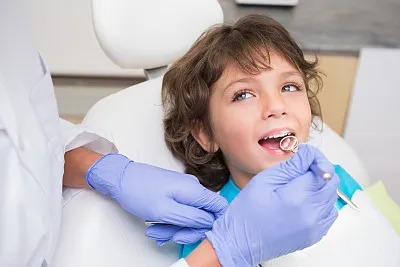The Essential Guide to Extracting a Tooth Safely and Effectively for Optimal Oral Health Improvement
Summary: Extracting a tooth, while often perceived as a daunting task, is essential for maintaining optimal oral health. This guide aims to provide a comprehensive overview of the tooth extraction process, highlighting safety protocols, effective techniques, aftercare practices, and the conditions that necessitate extraction. With detailed explanations of each aspect, readers will gain insights into why and how tooth extraction is performed safely and effectively. Following these guidelines ensures minimal discomfort and aids in faster recovery, ultimately improving ones overall oral health. Understanding the entire procedure will empower individuals to approach tooth extraction with confidence and clarity, ensuring a smoother process.
1. Understanding the Reasons for Tooth Extraction

Tooth extraction may be required for various reasons, the most common being severe decay or damage. When a tooth is compromised beyond repair, extraction becomes necessary to prevent infection or further deterioration of oral health.
Another reason for extraction includes overcrowding, where there is insufficient space in the mouth for all teeth. Orthodontic treatment may require the removal of certain teeth to allow others to align properly, contributing to a healthier bite.
Additionally, impacted teeth, particularly wisdom teeth, can lead to pain and infection if not removed. This can cause complications in neighboring teeth and even lead to systemic health issues if left untreated.
2. Preparing for a Safe Tooth Extraction
Before proceeding with an extraction, it’s critical to undergo a thorough dental examination. X-rays are often employed to assess the positioning of the tooth and surrounding structures, providing essential information for the dentist.
Patients should also inform their dentist of any underlying health conditions or medications they are taking, as these factors can influence the extraction procedure and recovery. This detailed planning phase is crucial for minimizing risks associated with anesthesia and healing.
Lastly, establishing a plan for aftercare following the extraction is vital. Preparing for potential discomfort and understanding what to expect can significantly improve recovery experiences.
3. The Actual Tooth Extraction Procedure
The tooth extraction procedure typically begins with local anesthesia to numb the area around the tooth, ensuring a pain-free experience for the patient. Depending on the complexity of the extraction, sedation may also be used for anxious patients.
Once the area is numb, the dentist uses specialized tools to loosen the tooth from its socket. For simpler extractions, the tooth may be removed in one piece. However, for more complex extractions, such as impacted teeth, the dentist may need to break the tooth into smaller pieces for easier removal.
After the tooth is removed, the dentist will clean the socket and may place stitches if necessary. Proper sealing of the socket is crucial to prevent bleeding and initiate healing.
4. Aftercare for Optimal Healing
Post-extraction care is vital to ensure quick recovery and prevent complications. Patients should follow the dentist’s instructions regarding pain management through prescribed medications or over-the-counter pain relievers.
Additionally, maintaining proper oral hygiene is essential, but patients should avoid brushing the extraction site for the first 24 hours to allow initial healing. Gentle rinsing with salt water can help keep the area clean.
Lastly, it’s advisable to avoid strenuous activities and consume soft foods to minimize discomfort and promote healing. Monitoring the extraction site for unusual symptoms, such as prolonged bleeding or signs of infection, is also crucial.
Summary:
The process of tooth extraction is a significant aspect of dental care that plays a vital role in improving oral health. Understanding the necessity, preparation, procedure, and aftercare involved can empower patients to handle the extraction process with confidence.
By adhering to the essential guidelines presented in this article, one can ensure a safe and effective extraction experience, leading to optimal recovery and health improvements.
This article is compiled by Vickong Dental and the content is for reference only


